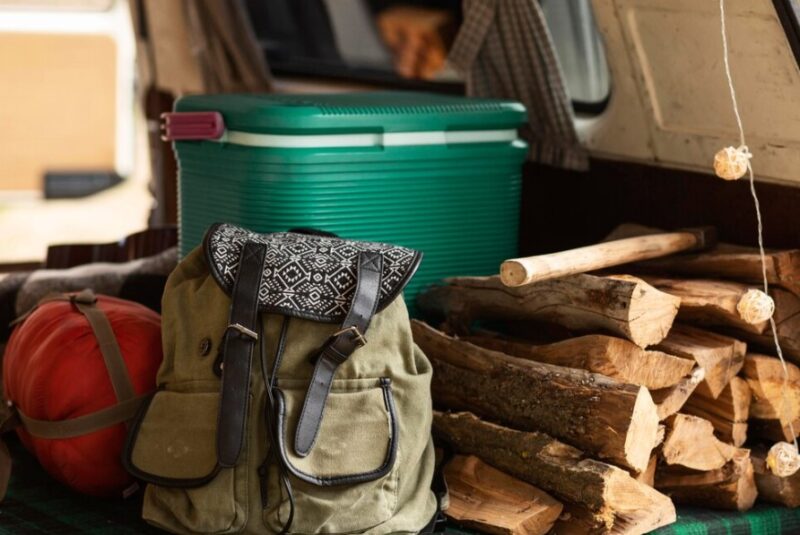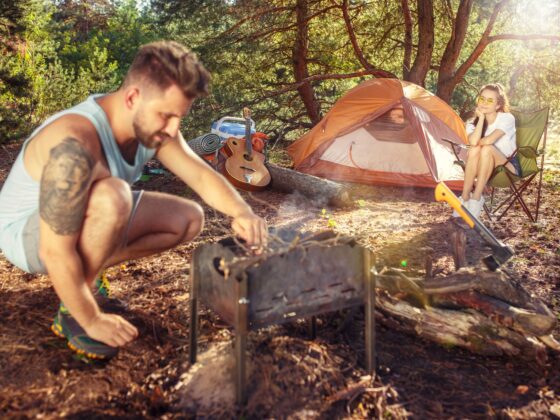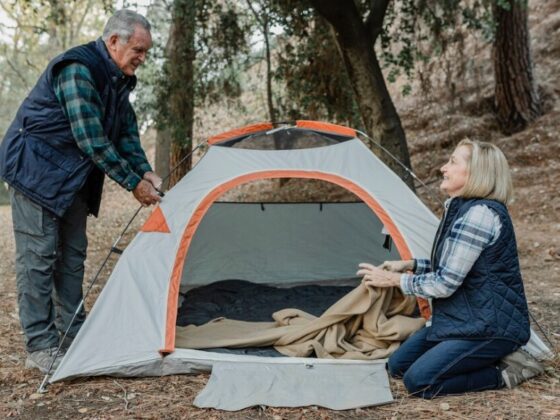Camping is an exhilarating outdoor adventure that allows you to immerse yourself in nature and create unforgettable memories. However, the success of your camping trip largely depends on the proper organization and storage of your gear. Ensuring that your camping equipment is well-protected and easily accessible can make all the difference between a smooth and stress-free experience and a frustrating one.
Proper gear storage not only keeps your items in pristine condition but also simplifies the packing and unpacking process, allowing you to focus on the joys of the great outdoors. Whether you’re a seasoned camper or a newcomer, understanding the importance of storage solutions can help you maximize the efficiency and enjoyment of your camping adventures.
Factors to Consider When Choosing Storage Containers for Camping Gear
When it comes to selecting the right storage containers for your camping gear, there are several key factors to consider:
- Durability: The containers you choose should be able to withstand the rigors of outdoor use, including exposure to weather elements, rough terrain, and potential impacts.
- Waterproofing: Protecting your gear from moisture, rain, and spills is crucial, especially for items that can be damaged by water, such as electronics or sensitive equipment.
- Portability: The containers should be easy to transport, whether you’re hiking to a remote campsite or loading them into your vehicle.
- Organizational Capabilities: Look for containers that offer features like dividers, compartments, or labels to help you keep your gear organized and easily accessible.
- Capacity: Choose containers that can accommodate the size and quantity of your camping gear, ensuring that everything has a designated space.
- Compatibility: Consider how the containers will fit together in your vehicle or campsite, as well as their ability to stack or interlock for efficient storage and transport.
Introduction to Thor Storage Boxes
One brand that has gained popularity among outdoor enthusiasts for its high-quality storage solutions is Thor. Thor’s line of storage boxes is designed with the unique needs of campers, hikers, and adventurers in mind.
Thor’s storage boxes are known for their exceptional durability, constructed from heavy-duty materials that can withstand the rigors of outdoor use. They feature waterproof seals and rugged latches to protect your gear from the elements, ensuring that your items remain dry and secure even in challenging weather conditions.
Regarding portability, Thor’s storage boxes are designed with ergonomic handles and lightweight construction, making them easy to transport from your vehicle to your campsite. The boxes also offer a variety of organizational features, such as removable dividers and customizable compartments, allowing you to keep your gear neatly organized and easily accessible.
Tips for Organizing and Packing Camping Gear
Effective organization and packing can make a significant difference in the efficiency and enjoyment of your camping trip. Here are some tips to help you make the most of your storage containers:
- Create a Packing List: Before your trip, make a comprehensive list of all the items you’ll need to bring, categorizing them by type or function. This will help you ensure that you don’t forget any essential gear and will guide your packing process.
- Group Items by Category: When packing, group your gear into logical categories, such as cooking supplies, first-aid items, or camping accessories. This will make it easier to find what you need and prevent items from getting lost or mixed up.
- Utilize Dividers and Compartments: Take advantage of the organizational features offered by your storage containers, such as removable dividers or compartments, to keep your gear neatly separated and easily accessible.
- Label and Color-Code: Use labels, tags, or color-coding to identify the contents of each container, making it simple to locate specific items or categories of gear.
- Pack Strategically: Arrange your gear in the containers in a way that maximizes space and ensures that the most frequently used items are easily accessible.
- Consider Weight Distribution: When packing your storage containers, be mindful of the weight distribution to make them easier to transport, especially if you’ll be carrying them long distances.
Essential Camping Tools and Their Storage Requirements
Camping gear can encompass a wide range of items, each with its own storage needs. Here are some examples of essential camping tools and the considerations for their storage:
- Cooking Supplies: Pots, pans, utensils, and other cooking equipment require durable, waterproof containers that can withstand heat and potential spills.
- Lighting and Electronics: Flashlights, lanterns, and electronic devices need to be stored in a way that protects them from moisture and impacts.
- First-Aid Kit: A well-stocked first-aid kit should be kept in a readily accessible container, with clear labeling and organization to ensure quick access in an emergency.
- Camping Tools: Items like knives, axes, and multi-tools require secure storage to prevent injury and ensure they’re easily found when needed.
- Outdoor Gear: Tents, sleeping bags, and other large or bulky items may require specialized storage containers or bags to keep them organized and protected.
- Clothing and Accessories: Clothing, footwear, and personal items should be stored in a way that keeps them clean, dry, and easily accessible.
By considering the unique storage requirements of each type of camping gear, you can ensure that your equipment is well-protected and easily accessible throughout your outdoor adventures.
Comparing Different Types of Storage Containers for Camping Gear
When it comes to storing your camping gear, there are several types of storage containers to choose from, each with its own advantages and disadvantages. Let’s take a look at some of the most popular options:
- Plastic Storage Boxes:
- Pros: Durable, waterproof, and often affordable
- Cons: May not be as rugged or weatherproof as other options
- Soft-Sided Duffel Bags:
- Pros: Lightweight, easy to transport, and can accommodate bulky items
- Cons: May not provide as much protection as hard-sided containers
- Specialized Camping Totes:
- Pros: Designed specifically for outdoor use, with features like waterproofing and organizational compartments
- Cons: Can be more expensive than generic storage options
- Metal or Aluminum Containers:
- Pros: Extremely durable and resistant to damage, often with secure locking mechanisms
- Cons: Heavier and more expensive than plastic or soft-sided options
- Waterproof Dry Bags:
- Pros: Offer exceptional protection against water and moisture, ideal for items that need to stay dry
- Cons: May not provide as much organizational capability as other container types
When selecting the right storage containers for your camping gear in an outdoor store, it’s essential to weigh the specific needs of your outdoor activities, the types of gear you’ll be storing, and your personal preferences for features like durability, portability, and organizational capabilities.
Final Thoughts: Finding the Perfect Storage Solution for Your Camping Gear
Choosing the right storage containers for your camping gear is a crucial step in ensuring a successful and enjoyable outdoor adventure. By considering factors like durability, waterproofing, portability, and organizational capabilities, you can find the perfect storage solution that meets the unique needs of your camping gear and your personal preferences.
Thor’s line of storage boxes, with their exceptional build quality, waterproof design, and organizational features, offer a compelling option for outdoor enthusiasts. By investing in high-quality storage containers, you can protect your valuable camping gear, streamline your packing and unpacking process, and focus on creating unforgettable memories in the great outdoors.



